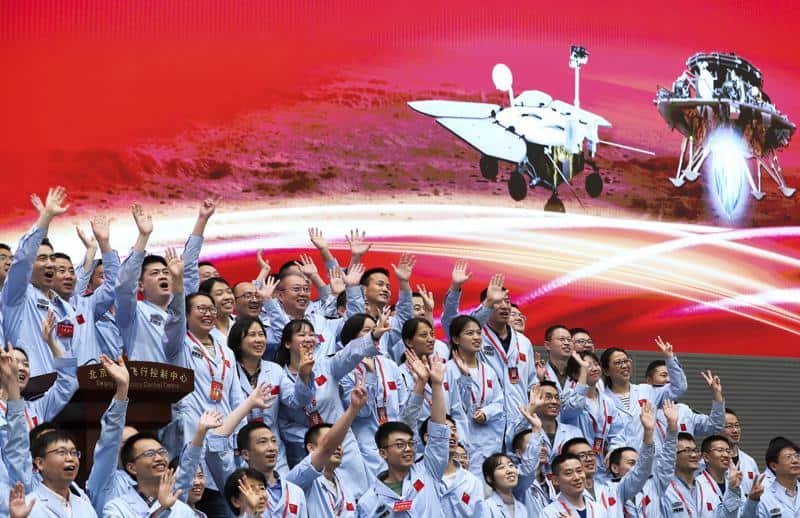State-affiliated media confirmed on social media that China launched its first pair of robots on the Mars surface and became the second country to land very successfully after overcoming a daring, seven-minute landing sequence. Nasa is the first Space station, which successfully managed to land and operate a rover on this Planet before China. The Soviet Union’s Mars 3 Spacecraft landed on the Planet in 1971 and communicated for about 20 seconds before unexpectedly going dark.
On July 23, 2020, Tianwen-1 Spacecraft was launched from the Wenchang Spacecraft Launch site in China’s Hainan Province, setting off a seven-month journey on the Red Planet. The spacecraft trio “has functioned normally” since it entered Mars orbit in February, the China National Space Administration (CNSA) said in a statement Friday morning. A “huge amount” of scientific data and snapped photos of Mars it collected while it in its orbit.
According to journalist Andrew Jones, The Tianwen-1 orbiter, clutching the rover-lander bundle, has been scoping out the Utopia Planitia landing site for over three months, flying close to Mars every 49 hours in an elliptical orbit (an egg-shaped orbital pattern).
Now the Zhurong rover will progress on a mission of at least three months to study Mars’ climate and geology on the Mars surface.

In China’s Mission, there involve three Spacecrafts working together. The landing took place at Utopia Planitia, and also it is a flat swath of Martian landing (the same region where NASA’s Viking 2 lander touched down in 1976). After landing, the lander will unfurl a ramp and deploy China’s Zhurong rover, a six-wheeled solar-powered robot named after the god of fire in ancient Chinese mythology. It also conveys a suite of onboard instruments, including two cameras, a Mars-Rover Subsurface Exploration Radar, Mars Magnetic Field Detector, and Mars Meteorology Monitor.
“The main task of Tianwen-1 is to perform a global and extensive survey of the entire planet using the orbiter, and to send the rover to surface locations of scientific interests to conduct detailed investigations with high accuracy and resolution,” the mission’s top scientists wrote in Nature Astronomy last year. The rover is roughly 240 kg, nearly twice the mass of China’s Yutu Moon rovers.
By the way, the one thing that is very interesting in all of this is that the name of the Mars mission Tianwen-1 has taken from a long poem “Tianwen”, which means “Questions to Heaven”. It marks the latest in a quick succession of advances in space exploration for China.


